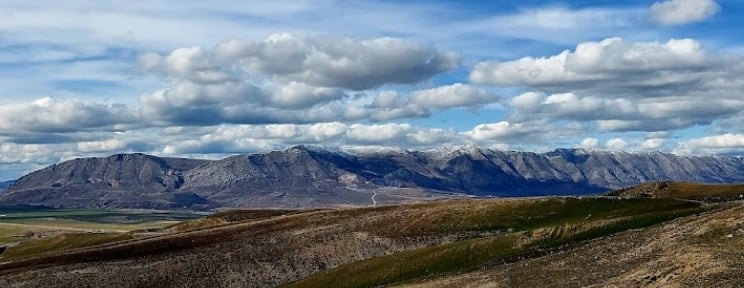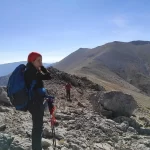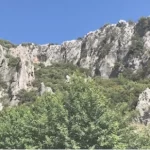Tecer Mountains
Tecer Mountains, located 40 kilometers southeast of Sivas, is a range of mountains that runs east-west and reaches a height of 2,262 meters. The Huma River divides the mountain in two, with the southern part known as Deli Mountain and the northern part as Çengelli Mountain.
Discovering the Natural Wonders of Tecer Mountains: A Rich Diversity of Flora and Fauna in a Karstic Landscape
The northern slopes of Tecer Mountains drain into Kızılırmak River, while the southern slopes drain into Çaltı Stream, which flows into the Euphrates River. The mountain peaks form the watershed line between the Euphrates and Kızılırmak Rivers.
The Tecer River, which originates from the northern slopes of the mountain, flows through the city of Sivas and eventually merges into the Kızılırmak River. The mountain range is composed of limestone and is characterized by faults and cracks. Due to its karstic structure, it has high-flowing springs that are rich in calcium carbonate.
The absence of industrial and agricultural activities, garbage dumping, and mining in the feeding areas means that the calcium carbonate-rich water of the 11 springs that flow from the mountain is free from pollution. Karstic structures have developed along faults and fracture lines.
The Tecer Mountains area is surrounded by steppes, dry forests, and semi-humid forests. Yellow pine and hazelnut trees dominate the semi-humid forests on the northern slopes of the mountain, while the dry forests on the southern slopes consist of oak, juniper, and black pine trees. The elevation-dependent species diversity and abundance of the steppe community vary. The forest’s lower limit passes above 1550-1600 meters.
The grassland community at the foot of Tecer Mountain is not a natural result of the environmental conditions. The rainfall threshold for natural grassland is considered to be 350 mm. The probability of rainfall above this threshold in the area is 75%. Precipitation increases with altitude and reaches 400-500 mm in the foothills of the mountain and 600-900 mm in the upper parts. Brown forest soil dominates the mountain up to an altitude of 2000 meters. The grasslands at the foot of the mountain are anthropogenic grasslands created by human intervention. These areas have the potential for dry forest growth under natural conditions.
Around 40 plant taxa in the area meet the Important Nature Area criteria. Sivas helichrysum (Helichrysum sivasicum) and Deli Mountain St. John’s wort (Hypericum pumilio) are endemic plants and can only be found in the Tecer Mountains. The Mountains is also home to a diverse array of bird species, including cranes and birds of prey such as golden eagles, black kites, and red hawks. For mountaineers and nature lovers, the Tecer Mountains offer a beautiful and diverse landscape, rich in flora and fauna, and are a true natural wonder to explore.
For mountaineers, Tecer Mountains offer an exciting challenge. The rugged terrain and steep slopes make for a thrilling ascent, and the stunning views from the top are worth the effort. Climbers will need to be experienced and well-prepared, as the terrain can be challenging and unpredictable. However, with proper planning and preparation, the ascent of Tecer Mountains can be a rewarding experience for any mountaineer looking for a new adventure. It’s also important to note that the area is relatively untouched by tourism, so climbers can enjoy a truly authentic experience of nature and mountaineering.
To consequence, Tecer Mountains is surrounded by steppes, dry forests, and semi-humid forests, with a diverse array of flora and fauna, including endemic plants and various bird species. The rugged terrain and steep slopes of Tecer Mountains offer an exciting challenge for mountaineers, with stunning views from the top. The area is relatively untouched by tourism, providing climbers with an authentic experience of nature and mountaineering. You must come to the Tecer Mountains and see these undiscovered, untouched mountains and enjoy the view!





